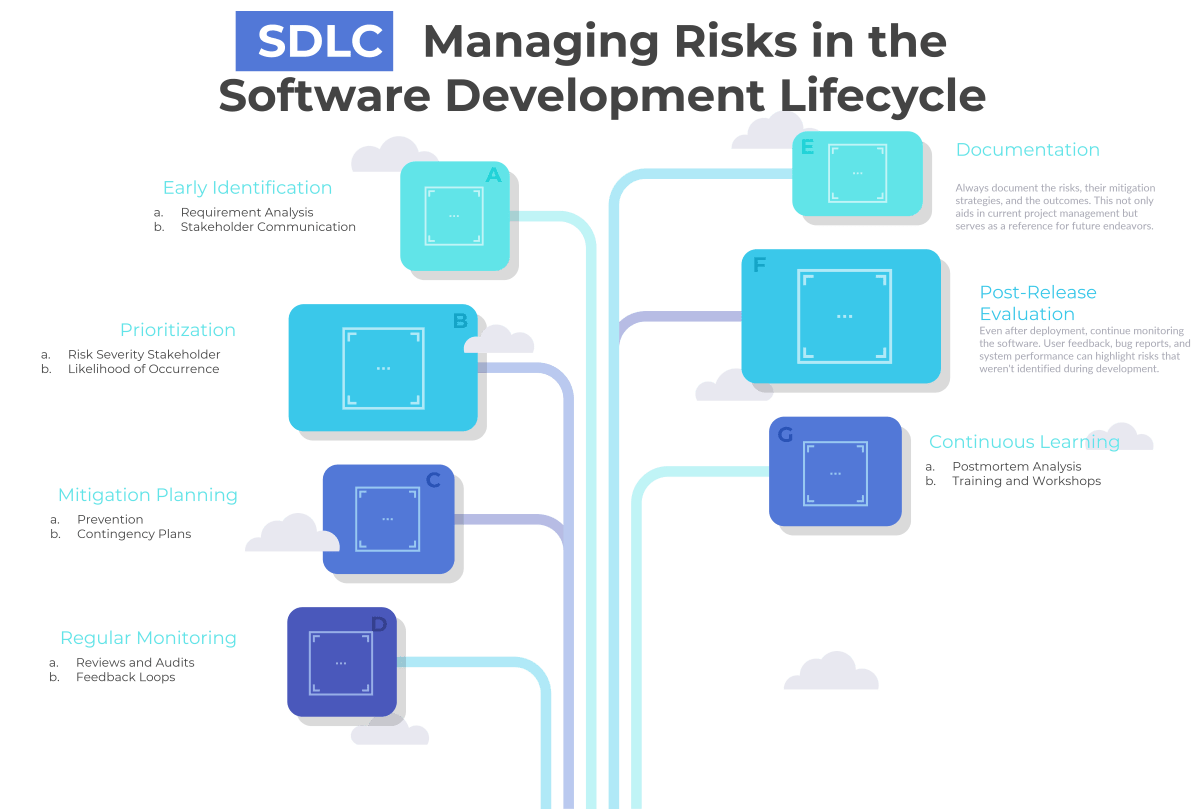
How To Manage Risks In The Software Development Lifecycle
The software development lifecycle (SDLC) is a rigorous process that demands meticulous planning, execution, and monitoring. While developing software is inherently fraught with challenges, understanding and managing associated risks can significantly reduce project delays, cost overruns, and post-launch issues. In this blog, we’ll delve into strategies for risk management within the SDLC.

1. Early Identification
a. Requirement Analysis:
Begin with a thorough requirement analysis. A well-defined and comprehensive list of requirements minimizes the chances of scope creep and potential pitfalls during development.
b. Stakeholder Communication:
Engage stakeholders throughout the process. Their input can help identify potential risks early on, especially those related to end-user requirements and business goals.
2. Prioritization
a. Risk Severity:
Once risks are identified, categorize them based on their potential impact. This helps in allocating resources to the most pressing concerns.
b. Likelihood of Occurrence:
Evaluate the probability of each risk materializing. A high-impact but low-probability risk might require a different strategy than a high-probability, low-impact one.
3. Mitigation Planning
a. Prevention:
Where possible, put measures in place to prevent risks. This could mean better training, refined processes, or improved tools.
b. Contingency Plans:
For risks that can’t be prevented, have backup plans. This could include additional resources, budget allocations, or time buffers.
4. Regular Monitoring
a. Reviews and Audits:
Conduct regular code reviews, quality assurance checks, and milestone evaluations. These can help identify and rectify risks before they escalate.
b. Feedback Loops:
Ensure feedback mechanisms are in place – from end-users, testers, and stakeholders. This can provide early warnings for potential risks.
5. Documentation
Always document the risks, their mitigation strategies, and the outcomes. This not only aids in current project management but serves as a reference for future endeavors.
6. Post-Release Evaluation
Even after deployment, continue monitoring the software. User feedback, bug reports, and system performance can highlight risks that weren’t identified during development.
7. Continuous Learning
a. Postmortem Analysis:
After project completion, analyze what went well and what didn’t. Understanding past mistakes and successes builds a foundation for better risk management in the future.
b. Training and Workshops:
Keep the team updated with the latest tools, techniques, and best practices in software development and risk management.
In conclusion, risk management in SDLC is a continuous and iterative process. By adopting a proactive approach, software development teams can not only navigate challenges more effectively but also ensure the delivery of a robust, high-quality end product.










